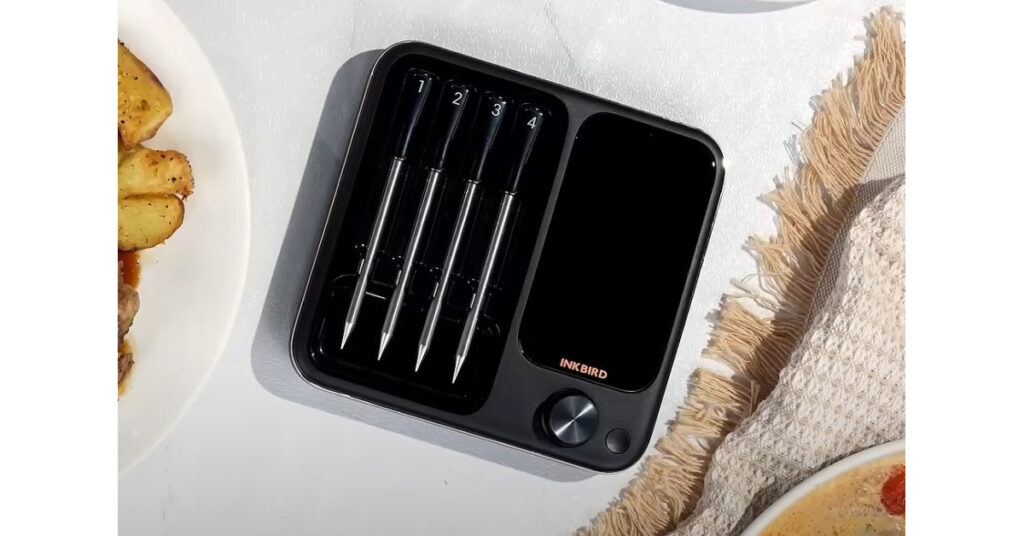Cooking meat perfectly is both an art and a science. While seasoning and cooking techniques bring flavor, temperature is what guarantees safety and tenderness. Undercooked meat can harbor harmful bacteria, while overcooked meat loses its juiciness and flavor.
That’s why professional chefs and home cooks alike rely on the best meat thermometer to achieve consistent results. With a thermometer, you can stop guessing and start cooking with confidence. Read On.
Benefits of Using a Meat Thermometer
- Food Safety – Ensures poultry, beef, pork, and seafood reach the USDA-recommended internal temperatures.
- Perfect Doneness – Whether you prefer medium-rare steak or fall-off-the-bone brisket, a thermometer helps you nail it every time.
- Consistency – No more trial and error; you can recreate the same delicious results with confidence.
- Versatility – Works for grilling, oven roasting, air fryers, and even baking bread or candy.
Types of Meat Thermometers
- Instant-Read Thermometers – Quick checks while grilling or pan-searing.
- Probe Thermometers – Insert into meat while cooking to monitor progress.
- Wireless Thermometers – Allow you to track temperatures from your phone or display unit without hovering over the grill.
Tip: Upgrade your cooking with the INKBIRD Wireless Thermometer for hands-free precision.
How to Use a Meat Thermometer
- Insert Correctly – Place the probe into the thickest part of the meat, avoiding bones and fat for accurate readings.
- Know the Safe Temperatures – For example:
- Chicken: 165°F (74°C)
- Beef steak: 130–135°F (medium rare), 145°F (medium)
- Pork: 145°F with 3-minute rest
- Fish: 145°F
- Check Early – Start checking a few minutes before the recipe’s suggested time to prevent overcooking.
- Rest the Meat – Remove from heat slightly before the target temperature, as carryover cooking will raise it a few degrees.
Expert Tips for Best Results
- Calibrate your thermometer occasionally for accuracy.
- Clean the probe after every use to avoid cross-contamination.
- Use a dual-probe wireless thermometer for large cuts like brisket, turkey, or roast beef.
- Combine temperature readings with time and texture for the ultimate cooking confidence.
Frequently Asked Questions
Q: Can I leave a meat thermometer in while cooking?
A: Yes, if you’re using an oven-safe or wireless probe thermometer, you can leave it in to monitor temperature continuously.
Q: Do wireless thermometers work on grills and smokers?
A: Absolutely! INKBIRD Wireless Thermometers are designed to withstand high heat and give real-time readings directly to your device.
Q: How do I know if my thermometer is accurate?
A: Test it by inserting it into boiling water (should read ~212°F/100°C) or ice water (32°F/0°C).
Final Thoughts
A meat thermometer is more than a cooking tool—it’s the secret to food safety, flavor, and consistency. Whether you’re searing steaks, roasting a holiday turkey, or smoking brisket low and slow, the right thermometer makes all the difference.
Also read: Beyond Fine Dining: Curating Unforgettable Flavor Experiences







